International Journal of Agricultural Science and Food Technology
The integration of farmer participation approaches in cotton variety development for efficient selection, adoption, and production of new cotton varieties in Zimbabwe
Mare M1*, Chapepa B1, Mubvekeri W1 and Kutywayo D2
Cite this as
Mare M, Chapepa B, Mubvekeri W, Kutywayo D (2022) The integration of farmer participation approaches in cotton variety development for efficient selection, adoption, and production of new cotton varieties in Zimbabwe. Int J Agric Sc Food Technol 8(3): 187-192. DOI: 10.17352/2455-815X.000162Copyright License
© 2022 Mare M, et al. This is an open-access article distributed under the terms of the Creative Commons Attribution License, which permits unrestricted use, distribution, and reproduction in any medium, provided the original author and source are credited.The success of any breeding program rests upon the active involvement and participation of key stakeholders or technology recipients. Cotton (Gossypium hirsutum L.) is a versatile crop that is grown in most parts of the world, hence the need to involve different players in the process. Zimbabwe’s national variety development program includes a “Client-oriented” research approach called “Participatory Variety Selection” (PVS) in the process. The process that involved the evaluation of different advanced cotton genotypes by farmers in different cotton growing areas included five advanced genotypes and one commercial variety popularly grown by farmers. These were grown in a Mother-Baby Trial arrangement. Through the integration of farmers’ and researchers’ selection criteria, the study sought to enhance the identification and selection of best-performing cotton genotypes under diverse growing conditions. The study established that farmers’ preferred cotton attributes included large bolls (> 5g), uniform boll split (to avoid many picks), short interboll distance (many bolls per fruiting branch), uniform short height (1.0-1.2m), more bolls per plant (>30) and low pest damage (bollworms and Jassid). Through the use of these attributes, the farmers identified SN-96-5, 830-01-3, and 645-98-11 as their best performing genotypes through voting and Focus Group Discussions that were conducted where they recorded 206 votes, 130 votes, and 129 votes respectively. Total Seed Cotton Yield data from the farmer-managed plots (Baby Trial) and Researcher-managed (Mother Trial) were recorded and subjected to statistical analysis. The study results which revealed significant differences in the genotypic, environmental variance, and interaction (Table 5) (P<0.04, P<0.001, and P<0.035 respectively) identified genotype SN-96-5 as the best performing genotype. AMMI and GGE biplots also indicated that SN-96-5 was the most ideal, high-yielding, and fairly stable genotype. Therefore, SN-96-5 is recommended for release and commercial production in Zimbabwe.
Background
Cotton (Gossypium hirsutum L.) is an important cash crop that is predominantly grown by smallholder farmers in Zimbabwe. Cotton is also a worldwide grown crop due to its agricultural and industrial value accompanied by many products and by-products. Smallholder farmers in Zimbabwe have in the past decade realized a decline in the seed-cotton yields. Different opinions have been shared as to the causes of yield decline wherefore among them including climate change effects, lack of superior varieties, and poor crop management strategies thus pest, disease, and agronomic management options [1]. This has also led to the national cotton production decline, thus affecting the country’s foreign currency and national income security. However, many countries growing cotton have been affected by the effects of climate variability which include long mid-season dry spells, high temperatures, high disease, and pest pressures.
Regardless of the efforts made by the public and private breeding programs to curb such adverse conditions through the development of new varieties, slow progress has been made leading to cotton farmers heavily being attached to the old varieties which are failing to withstand the effects of climate change. The current cotton production situation in Zimbabwe defines a dilemma in which farmers are still growing old varieties that were released in 1998 and 2006. This means that there are no broad options for farmers to use current improved cotton genetics that are abreast with climate variabilities. The situation has been arrested by the national breeding program through its attempt to address the intervention strategies as indicated in the Crops Research, Biodiversity and Variety Development sub-program performance management program (Government of Zimbabwe, Sub-program, Crops Research, Biodiversity, and Variety Development Template, 2021 ), where some improved advanced cotton varieties have been developed.
Literature review and the scope of the study
The national breeding program has since updated its variety trialing into a researcher-farmer collaboration thus empowering the farmers and increasing the variety adoption [2]. This is in alignment with the National Development Strategy 1 and the nation’s vision 2030, in which the blueprints well spell out the need to improve stakeholder participation and strengthen on-farm trials [3]. In the document, it has been highlighted that it takes time to convince farmers to adopt new technologies hence slow uptake of new and better technologies. Just as according to Kolech et al., [4] where the researcher shared that though new high-yielding and late blight tolerant potato varieties are developed there has been lower adoption of new varieties than expected and this is the same scenario in cotton production.
Fentahun et al., [5] also did some participatory research work on cotton where the author tested eight released varieties. The findings from the research portrayed the importance of considering farmers in identifying varieties that perform well under their production zones. This raises key fundamentals in participatory research that can be strongly considered when evaluating cotton varieties for early and quick adoption by farmers.
The study which sought to strengthen the existing links between the farmers and researchers builds a farmer’s involvement platform which will, in turn, create a sense of belonging and ownership for the developed research products [6]. This means such approaches motivate farmers and will enhance their commitment to innovativeness in their farming and cropping systems.
The involvement of farmers in cotton research should bear the essence of active participation, such that they feel and become part of the process of identifying the best technologies suitable for their farming environments. This justifies notable advances towards increased production and productivity, hence improved sustainable agricultural reforms and livelihoods [7].
The Agricultural Research and Development (R&D) systems are a recipe for good and key technologies that solve current problems being faced by farmers in different communities. However, there is a great need to make practical consultations that are hands-on based so the gaps between the researcher-farmer can be bridged. Such interactions will lay a socio-friendly environment or relationship which will coerce the researcher to the farmer route for easy and efficient adoption of new technologies. It is in this context that the wide adoption of new technologies should be a result of their capacity to answer problems being faced by farmers who are engaged in heterogeneous farming environments [8].
Participatory Variety selection as it might be regarded as an interactive platform generates benefits for both the researchers and farmers. This two-way beneficial route provides the researchers with feedback that allows them to align their research focus to the real needs required by farmers thus building demand-oriented research, and on another hand, the approach builds confidence in farmers about the technology, thus will have knowledge of practical sense on the advantages of the new technology over the old ones. This means the approach provides realistic questions to the researchers so that real answers can be provided to the technology end-user-the farmer [9].
Participatory Research in variety development transforms farmers from being only receivers of new technologies to producers through practical and real backgrounds. This will enhance and improve the adoption and innovative minds for further and future improvements. In other words, Participatory Research in variety development is a farmer empowerment wheel that keeps agricultural transformation a sustainable process [10].
This study which was a hands-on and participatory one in its functionality sought to involve farmers in the selection of pre-released cotton varieties by assessing farmers’ preferences across different Agro-ecological zones [11]. The study was a practical one in the sense that it followed a joint field evaluation of newly developed varieties. The process which is termed “Farmer Participatory Variety Selection” has been used in many food crops such as rice, maize, sugar beans, sorghum, and finger millet where the aim was to address some palatability and nutritional concerns by the end-users. However, the process has been widely spread to industrial crops such as cotton given that recently more smallholder farmers have dominated the production sector. The process which is more reliable and cheaper [12] involves various participatory approaches such as Participatory Rural Appraisal (PRA), Focus Group Discussions, and Questionnaires among others.
The advantages of the approaches are that more accurate ground information on end-user variety preferences is obtained, and that end-user feels empowered hence the sense of ownership is generated hence easy adoption of the varieties. The evaluation trials for the Farmer Participatory Variety Selection provide a wide range of advanced varieties for farmers to evaluate on their farms, using their resources (Gowda et al. 2000). Although participatory approaches including Participatory Variety Selection (PVS) have been effective in other crops its usefulness in cotton has not been documented.
Hence this study was conducted to
(i) identify the best farmer-preferred attributes and selection criteria for cotton varieties,
(ii) compare and assess the relationship between farmer participatory variety selection and researchers’ statistical analysis in identifying the best genotype and
(iii) identify and select the best performing genotype through the use of both farmers’ and researchers’ selection criteria.
Hence the study seeks to show the effectiveness and importance of integrating farmers’ and researchers’ variety selection criteria in identifying the most preferred and best-performing cotton genotypes.
Materials and methods
Germplasm and test-locations
Six cotton genotypes, which consisted of five advanced experimental lines and one commercial check variety (widely grown by smallholder farmers) were evaluated on farmers’ fields during the 2020/21 season across four major cotton production areas namely Masakadza (Middleveld Region), Dande, Chibuwe, Tokwane and Matikwa (Lowveld Region). Site and genotype information is shown in Table 1,2 respectively.
Trial design, management, and data collection
The trial was implemented following a Mother-Baby Approach [13], and the six genotypes were replicated twice laid in a Randomized Complete Block Design (RCBD). The genotypes were selected by researchers based on the candidates’ multi-locational performance. Each plot in the baby trial was planted in 8 rows which are 8m long, whilst in the mother trial, each plot was planted in 6 rows which are 6m long. Inter-row spacing of 1m and intra-row spacing of 0.3m was used. This resulted in 208 plants per 64m2 plot, and seed cotton yield data for analysis was taken from the 36m2 net plot.
Farmers were also involved in collecting cotton growth data every week, viz plant height, number of nodes, and fruit squares. This information is meant to help select varieties with a fast growth rate. At physiological maturity, participatory Variety Selection was conducted and the activity involved fifteen well-known cotton producers per site who were trained during the 2020 off-season period, thus making a total of sixty farmers from the four sites. Each farmer selected the best three varieties by voting, with which a ballot box was put at every plot. Each farmer was given three ballot papers with each ballot labeled 1, 2, and 3 whereby a ballot paper with a 1 would be cast on the best variety, then a 2 on the second-best, and 3 on the third best. So, a variety with many 1s would be ranked and rated the best. A one carried 5 points, a two carried 4 points and a three carried 3 points. After the voting process, and ballots were counted and consolidated, a Focus Group Discussion (FGD) was conducted where all the fifteen farmers per site and researchers discussed the reasons why the top 3 varieties were selected and why the bottom 3 varieties were not selected [2]. The process was done at every site.
Yield data analysis
Total Seed Cotton Yield data from each site were collected and subjected to an across-site analysis of variance (ANOVA) using Genstat 18th Version, with mean separation using the Least Significance Difference (LSD) at a 5% probability level. Stability analysis for the seed cotton yield was done using the Genotype-Genotype x Environment (GGE) biplots and Additive Main Effects and Multiplicative Interaction (AMMI) model. The two statistical analysis models are equally similar as they use graphical presentations based on environment-centered Principal Component Analysis and double-centered Principal Component Analysis for GGE and AMMI respectively [14]. Genstat 18th version was used to perform the GGE and AMMI statistical analysis. The AMMI analysis seeks to explain the genotypic means, environmental means and their scores, stability value, genotypic and environmental mean performance, and genotypic stability. The GGE biplot seeks to assess the seed cotton yield stability, ideal genotypes, specific adaptation, mega-environments, and winning candidates using an average environment coordination (AEC) method [15-17].
Results and discussion
Participatory variety selection preferential analysis, scoring, and ranking
Descriptive statistics based on Participatory Variety Selection by voting was done at every site indicated that candidate genotype SN-96-5 scored the highest mark and was ranked first with a total of 206 (Table 3a) across all sites [13]. Candidate genotype 830-01-3 was ranked second with 130 total points and the candidate genotype 645-98-11 was ranked third after it scored a total of 129 points (Table 3a and Figure 1).
A Focus Group Discussion (FGD) was conducted seeking the reasons why farmers chose these best three candidates out of the total six genotypes. Most farmers indicated that candidate SN-96-5 got many points due to its significant many large bolls at an average of 35 bolls per plant, and it also experienced uniform boll splitting which is a very important favorable trait needed in a variety by farmers. Uniformity in boll splitting guarantees well-matured bolls in the first split, and it also enables farmers to experience fewer picks (Table 3b).
The other reasons raised by farmers on the same candidate included short interboll distance which was justified by many fruiting positions per sympodial branch, as well as low bollworm damage when compared to other candidates. Therefore, when all raised reasons for selecting candidate genotype SN-96-5 were mixed they concretely showed that the variety was more yielding compared to the rest [18]. The candidate was the winning genotype at Dande and Chibuwe where it was ranked number one whilst at Masakadza, Matikwa, and Tokwane it was ranked second.
Candidate genotype 830-01-3 was ranked second due to generally medium to large bolls and uniform boll split. The candidate gave an average of 17 bolls per plant. As supported by farmers’ reasons, genotype 830-01-3 performed well on overall yield compared to other genotypes.
Candidate genotype 645-98-11 was ranked third and farmers cited that the candidate had uniform medium height, medium boll sizes, and short interboll distance. The bottom 3 candidates included the check variety CRI-MS2 which was ranked number 4 with 101 points, followed by candidate 83-01-4 ranked number 5 with 96 points, and lastly candidate 85-01-1 with 27 points. Farmers normally have multiple needs but all of them cannot be carried in one variety, [19,20] hence the selection of different suites of varieties that are SN-96-5, 830-01-3, and 645-98-11 (Table 3a & Figure 1). The selection criteria which the farmers chose to use managed to identify good varieties which were similarly identified after the scientific data analysis [5].
On-farm seed cotton yield performance
An across-site analysis of variance was conducted and revealed significant differences in seed cotton yield for the genotypic, environmental variance, and interaction (Table 4) (P<0.04, P<0.001, and P<0.035 respectively). The sum of squares’ contribution to total variation for genotypic, environmental, and interaction effects was 14%, 32%, and 12% respectively. This means more contribution to the varietal variation in performance was due to the environment. The location Matikwa scored the highest means 2277kg/ha whilst Chibuwe, Dande and Masakadza scored 2046kg/ha, 2050kg/ha, and 1281kg/ha respectively. On genotypic performance candidate genotype, SN-96-5 recorded the highest seed cotton mean yield of 2415kg/ha compared to CRI-MS2 and 83-01-4 who recorded 2014kg/ha and 2008kg/ha respectively higher than the grand mean of 1971kg/ha (Table 5).
On-farm seed cotton yield stability, ideal genotypes, specific adaptation, mega-environments, and winning candidates
PC1 and PC2 contributed a total of 88.30% with each contributing 67.75% and 20.55% respectively. The GGE comparison biplot revealed that SN-96-5 was the most ideal genotype as it was located near the first concentric circle (Figure 2).
The GGE ranking biplot showed the mean genotypic yield performance and stability-indicating SN-96-5 is a high yield performing candidate and stable. This was revealed as it is located on the far-right location after the Average Environment Coordinate (AEC) as well as its generally short perpendicular line to the Average Environment Axis (Figure 3).
The GGE Scatter plot displayed two mega environments one which only had a Tokwane site whilst the second one comprised of Masakadza, Dande, Chibuwe, and Matikwa. Convincingly, SN-96-5 was the winning genotype for that second segment as it was positioned on the vertex of that sector of the polygon (Figure 4).
AMMI Plot: Mean Total Seed Cotton Yield versus the second Interaction Principal Component Axis (IPCA 2) – High yielding, stable genotypes, and favorable environments
Results according to the values of IPCA 2 versus Total Seed Cotton Mean Yields (Figure 5) genotypes SN-95-6, 83-01-4, and check CRI-MS2 were ideal genotypes as represented in the AMMI Biplot. This indicated that the genotypes were stable and high-yielding. Genotypes 645-98-11, 830-01-3, and 85-01-1 were unstable and low-yielding based on the position in which they were located. Locations Matikwa, Dande, Tokwane, and Chibuwe were high yielding and highly interacting and hence most suitable for specifically adapted genotypes (Figure 5) [21].
Conclusion
The study showed that farmers’ preferences are important in selecting varieties for adoption and production in Zimbabwe. Particularly, the study revealed that farmers’ participation and involvement in a variety of evaluation and selection and when integrated with the researchers’ selection criteria meaningful and valid results are produced. The genotypes SN-96-5, 83-01-4 and check CRI-MS2 displayed higher adaptability, and stability based on statistical data analysis (Mother-Baby Trial Data) whilst genotypes SN-96-5, 830-01-3, and 645-98-11 were observed and selected by farmers through Participatory Variety Selection (Use of farmer-preferred attributes) as the best. Therefore, genotype SN-96-5 is recommended for commercial release based on its wider adaptation, and high-yielding performance throughout the test environments.
Recommendations for future research
Though the results that were obtained from the farmer participatory evaluation through voting and Focus Group Discussion gave a similar trend in terms of the best variety, however, the author suggests that there is a need for future research to evaluate and come up with more technical approaches to be used by farmers when identifying the best varies based on a particular trait. For example, farmers identify a variety as the best based on big bolls (which is more attributed to weight), but if weighed on a scale, the bolls might be not as big as the farmers suggest. This will provide a more verifiable scientific conclusion.
- Arshad A, Raza MA, Zhang Y, Zhan L, Wang X, Ahmed M, Habib-ur-Rehman M. Impact of Climate Warming on Cotton Growth and Yields in China and Pakistan: A Regional Perspective. Agriculture 2021,11,97. https://doi. org/10.3390/agriculture11020097. 2021.
- Deressa Tesfaye Gutu. Participatory Variety Selection in Increasing the Availability and Diversity of Improved Faba Bean (Vicia Faba L) Varieties in Some Selected Woredas Of Arsi Zone. Curr Inves Agri Curr Res 9(3)- 2021. CIACR.MS.ID.000312. DOI: 10.32474/ CIACR.2021.09.000312.
- Republic of Zimbabwe.Sub-Programme Performance Management System. 2021.
- Semagn Asredie Kolech, Walter De Jong, Keith Perry, Donald Halseth, Fentahun Mengistu. Participatory Variety Selection: A Tool to Understand Farmers’ Potato Variety Selection Criteria. Open Agriculture. 2017; 2: 453–463
- Fentahun Biset, Mekedese Abebe, Getachew Asmare, Asfaw Azanaw, Tewodros Tesfay, Gobezy Chakli, Muhammed Adem, Semachew yedemy. Participatory Variety Selection of Improved Cotton (Gossypium hirsutum L.) Varietiesin North Western Gondar, Ethiopia(BIRJSH), 2019, 3(1)
- Périnelle Anne, Scopel Eric, Berre David, Meynard Jean-Mar. Which Innovative Cropping System for Which Farmer? Supporting Farmers' Choices Through Collective Activities. Front. Sustain. Food Syst., 27 April 2022 | https://doi.org/10.3389/fsufs.2022.753310
- Birgit Habermann, Todd A. Crane, Leah Gichuki, Tigist Worku, Roland Mugumya, Nathan Maiyo, Emmaculate Kiptoo, Shenkute Goshme, Fuad Mohammednur, Geoffrey Tugume, Kamango Alphaeus Satia, Joel Reagan Siamito. The Art of Letting Go: Transforming Participatory Research on Adaptation Practices Among Local Livestock-Keepers in East Africa in Times of Covid-19. 2022. https://doi.org/10.3389/fsufs.2021.768445
- Thar SP, Ramilan T, Farquharson RJ, Chen D.Identifying Potential for Decision Support Tools through Farm Systems Typology Analysis Coupled with Participatory Research: A Case for Smallholder Farmers in Myanmar. Agriculture 2021, 11, 516. https:// doi.org/10.3390/agriculture11060516
- Begna T. Importance of Participatory Variety Selection andParticipatory Plant Breeding in Variety Development and Adoption. Adv Crop SciTech 10: 497.
(6) (PDF) importance-of-participatory-variety-selection-and-participatory-plant-breeding-in-variety-development-and-adoption. 2022. Available from: https://www.researchgate.net/publication/359203518_importance-of-participatory-variety-selection-and-participatory-plant-breeding-in-variety-development-and-adoption [accessed Jun 29 2022]. - Habermann B, Vogl C R, Mekonnen K, Bekele K, Felt U. Farmers and scientists in AR4D: looking at a watershed management project through an STS lens. NJAS Impact Agric. Life Sci. 2021; 93, 126–151. doi: 10.1080/27685241.2021.1993095
- Witcombe JR, Joshi KD, Gyawali S, Musa AM, Johansen C, et al. Participatory plant breeding is better described as highly client-oriented plant breeding I Four indicators of client orientation in plant breeding. Expl Agri 2005; 41(3): 299-319
- Teame Gereziher, Seid Ephrem, Diriba Lemma.Participatory Evaluations of Faba Bean Vicia Faba LVarieties in Enda Mekoni District Northern Ethiopia. African Journal of Agriculture 2017; 4(2): 263-268
- Pandit DB, Islam MM, Harun-Ur-Rashid M, Sufian MA. Participatory Variety Selection in Wheat and Its Impact on Scaling-Up Seed Dissemination and Varietal Diversity. Bangladesh J. Agril. Res. 32(3): 473-486, September 20 2006; ISSN 0258 - 7122
- Rad Naroui MR, Abdul Kadir M, Rafii Hawa MY, Jaafar ZE, Naghavi R, Farzaneh Ahmadi. Genotype × environment interaction by AMMI and GGE biplot analysis in three consecutive generations of wheat (Triticum aestivum) under normal and drought stress conditions. 2013.
- Yan W, Hunt LA, Sheng Q, Szlavnics Z. Cultivar evaluation and mega-environment investigation based on the GGE biplot.Crop Sci. 2000; 40:597–605.
- Yan W. GGE Biplot- A Windows application for graphical analysis of multi-environment trial data and other types of two-way data. Agron. J. 2001; 93:1111-1118.
- Yan W, Rajcan I. Biplot Analysis of Test Sites and Trait Relations of Soybean in Ontario. Crop Sci. 2002 Jan;42(1):11-20. doi: 10.2135/cropsci2002.1100. PMID: 11756248.
- Kirsten vom Brockea, Gilles Trouche, Eva Weltzien, Clarisse P. Barro-Kondombo, Eric Gozé, Jacques Chantereau. Participatory variety development for sorghum in Burkina Faso: Farmers’ selection and farmers’ criteria. Field Crops Research 119 (2010)183-194. Doi: 10.1016/j.fcr.2010.07.005.
- Mulatu E, Zelleke H, Farmers’ highland maize (Zea mays L) selection criteria: Implications for maize breeding for the Harerghe highland of eastern Ethiopia. Euphytica, 2002, 127, 11- 30
- Kolech SA., Halseth D, De Jong W, Perry K, Wolfe D, Tiruneh FM, Schulz S. Potato Variety Diversity, Determinants and Implications for Potato Breeding Strategy in Ethiopia. American Journal of Potato Research, 2015a, 92, 551-566
- Kuang Hongyu, Marisol Garc´ıa-Pe˜na, L´ucio Borges de Ara´ujo, Carlos Tadeu dos Santos Dias. Statistical analysis of yield trials by AMMI analysis of genotype × environment interaction. Biometrical Letters, 2014; Vol. 51, No. 2, 89-102, DOI: 10.2478/bile-2014-0007
Article Alerts
Subscribe to our articles alerts and stay tuned.
 This work is licensed under a Creative Commons Attribution 4.0 International License.
This work is licensed under a Creative Commons Attribution 4.0 International License.
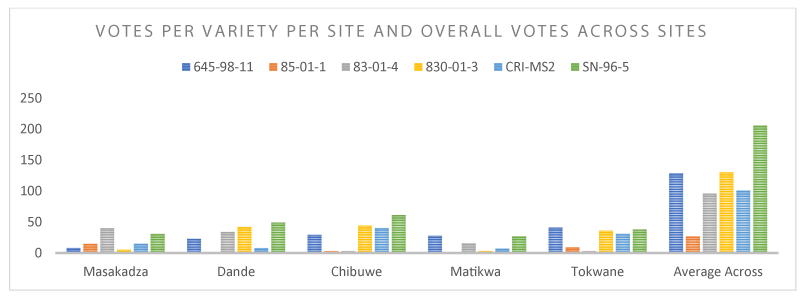
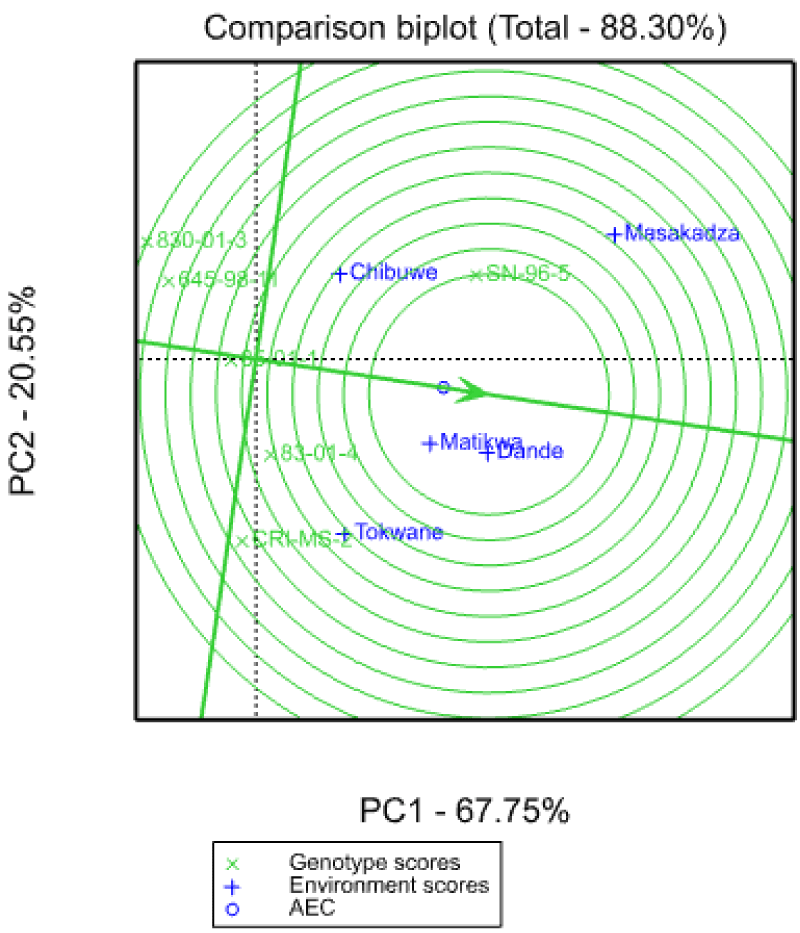
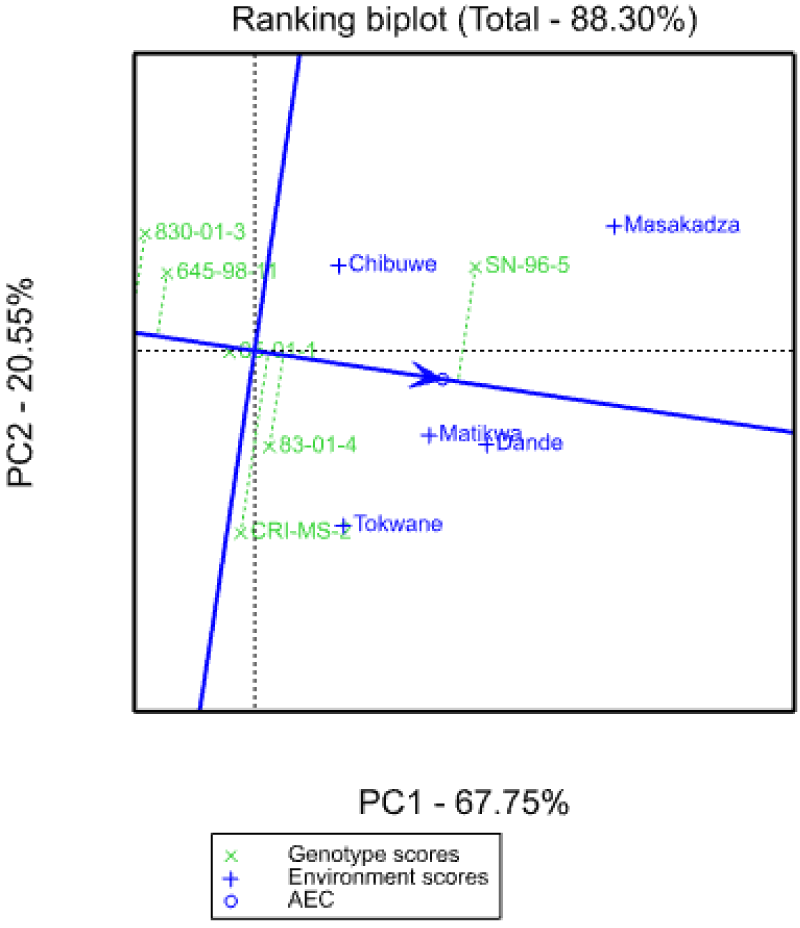
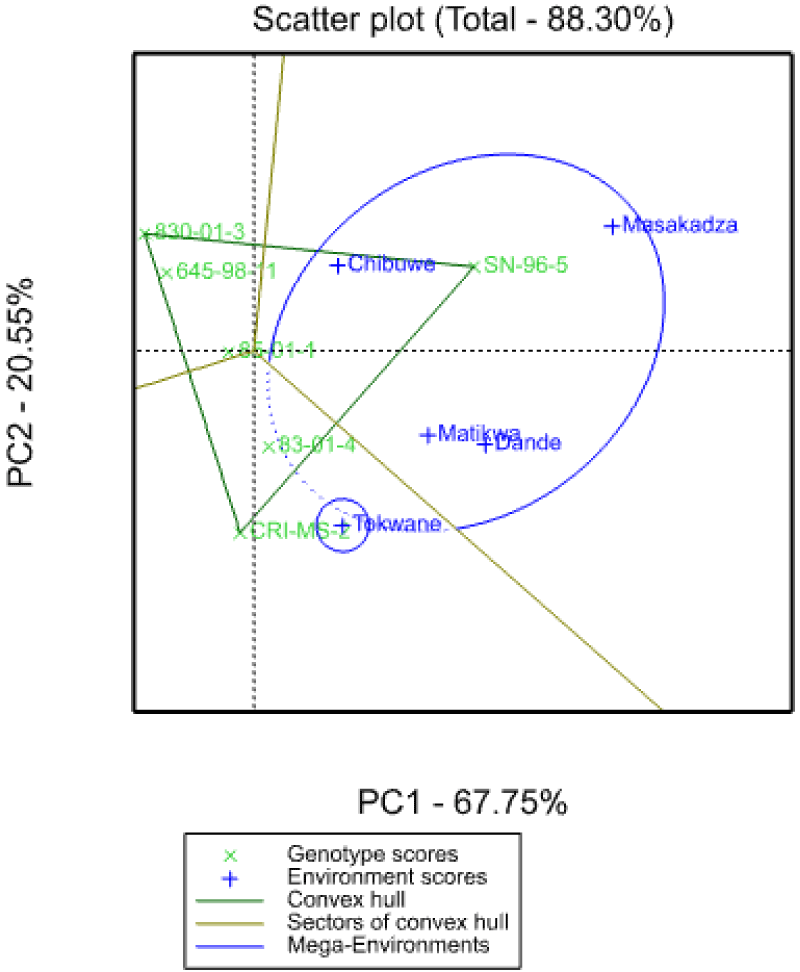
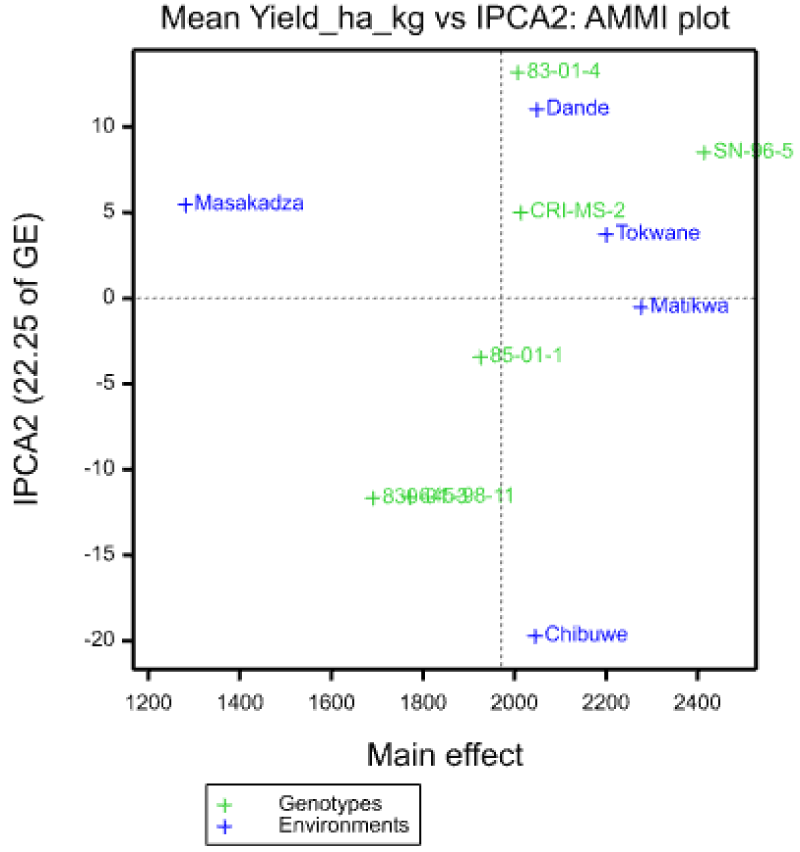

 Save to Mendeley
Save to Mendeley
